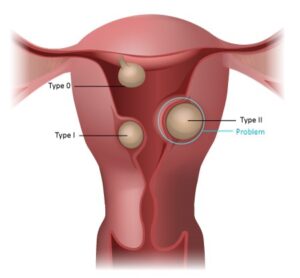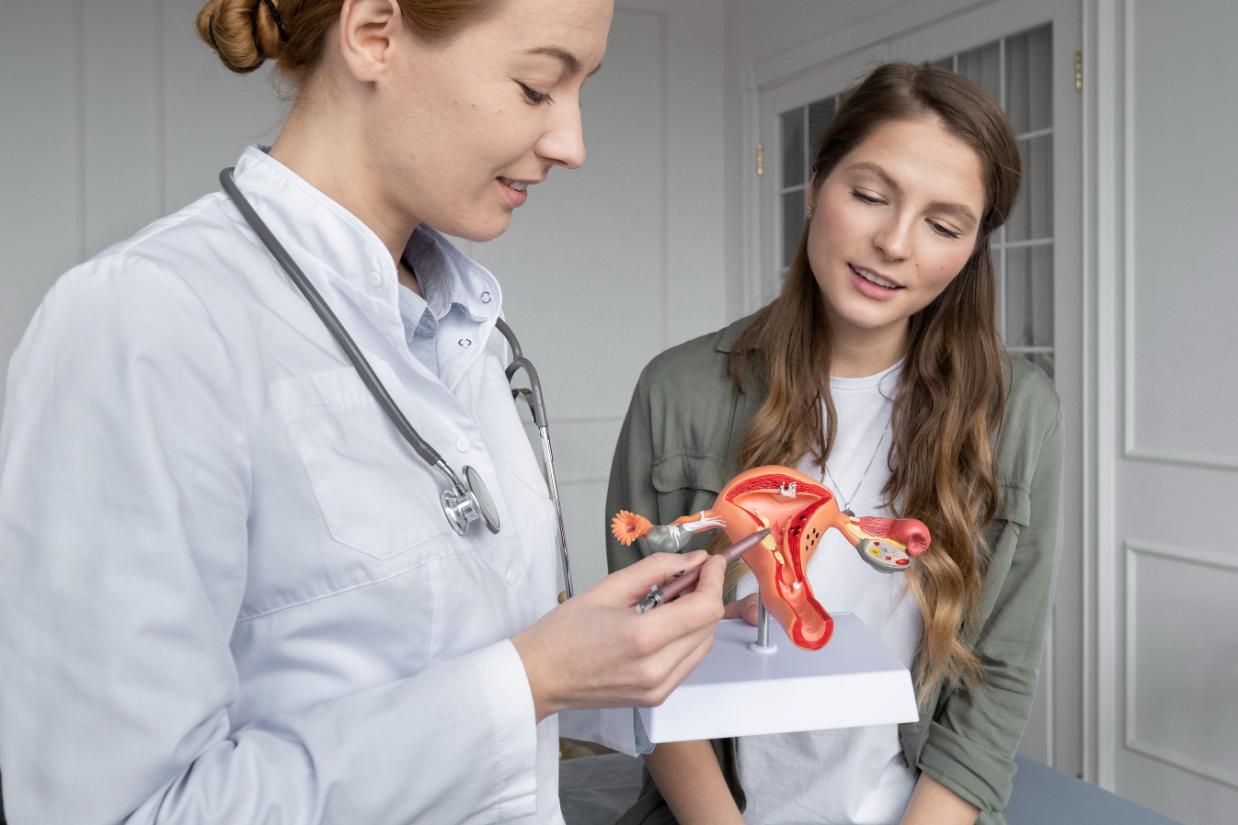
Overview
Submucosal fibroids are a type of uterine fibroids. They are noncancerous growth of the uterus that often appear during reproductive years. Submucosal fibroids develop in the muscle layer of the uterus, underneath the uterine inner lining, and grow into the uterine cavity. They are not found to be associated with uterine cancer and rarely develop into cancer.
Submucosal fibroids can vary in size, ranging from the size of seedlings to bulky masses that can distort and enlarge the uterus. They can be single or multiple. They are usually embedded into the uterine wall, but at times, they can be pedunculated and hanging into the uterine cavity with a stalk.
Symptoms
Most individuals with fibroids do not have any symptoms. They are often detected by the doctor during a pelvic exam or a prenatal ultrasound.
In individuals that do develop symptoms, they are:
- Heavy menstrual bleeding.
- Menstrual periods lasting more than a week.
- Spotting or bleeding between periods.
- Pelvic pain or pressure.
- Frequent urination due to pressure on the urinary bladder.
- Difficulty in emptying the bladder.
- Backache or leg pains.
- Rarely, if the fibroid overgrows its blood supply, causing it to die, it may cause acute pain and is considered a medical emergency.
Causes
The exact cause for fibroids is not known, but studies and clinical experience suggest the following:
- Hormones: Estrogen and progesterone appear to stimulate fibroid growth. Fibroids tend to shrink after menopause once the influence of hormones decreases.
- Growth factors: Growth factors like insulin-like growth factors affect fibroid growth.
- Extracellular matrix (ECM): ECM is the material that makes cells stick together, like mortar between bricks. Increased amounts of ECM make fibroids fibrous. ECM also stores growth factors, which causes biological changes in the cells.
- Genetic changes.
Risk Factors
- Younger, black women are at a greater risk for developing fibroids. They are also more likely to develop more severe symptoms and larger and more fibroids.
- Family history.
- Early menarche; obesity; vitamin D deficiency; having a diet higher in red meat and lower in green vegetables, fruit, and dairy; and alcohol appear to increase the risk of developing fibroids.
Diagnosis and Treatment
Fibroids are generally discovered during a routine pelvic exam. After this, there are various diagnostic options available the doctor can use to confirm more details. These are:
- Blood test to check for anemia due to heavy bleeding.
- Magnetic Resonance Imaging (MRI).
- Hysteresonography: An ultrasonography after the uterine cavity is filled with saline.
- Hysterosalpingography: A dye is used to highlight the uterus and the fallopian tubes on the X-ray films.
- Hysteroscopy: A scope is inserted in the uterine cavity to examine it.
Treatment for submucosal fibroids ranges from wait-n-watch to complete hysterectomy depending on various factors, like age, type of fibroids, the severity of symptoms, fertility issues, and whether the individual wants to have children in the future. So, the treatment options include:
- Watchful waiting
- Medications like Gonadotropin-releasing hormone agonists, progestin-releasing IUDs, Tranexamic acid, painkillers, oral contraceptives, vitamins, iron, etc.
- Noninvasive procedures such as MRI-guided focused ultrasound surgery
- Minimally invasive procedures like uterine artery embolization, radiofrequency ablation, and laparoscopic myomectomy
- Surgeries like abdominal myomectomy and hysterectomy
Here’s where you can reach us for appointments or for answers to all your pregnancy related questions
http://www.kjkhospital.com/contact-us/
Phone Numbers: 0471-2544080, 2544706
Email: kjkqueries@gmail.com
Subscribe to KJK Hospital YouTube Channel and stay updated with the latest in Pregnancy and Infertility.
Subscribe Here –





